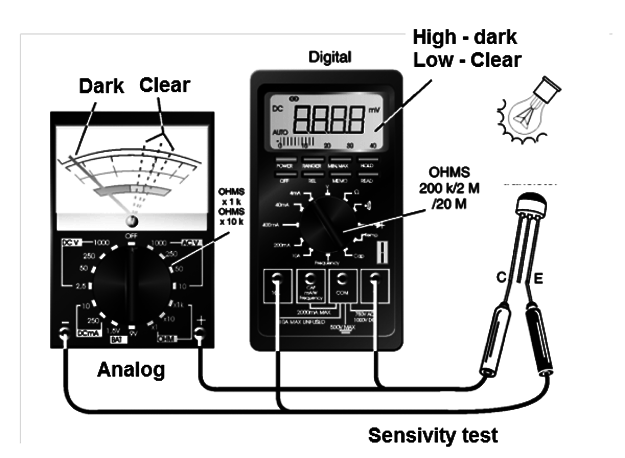If a signal is applied to the LED it can be transferred to the transistor by a light beam. This means that no electric connections exist between them, so the transmitting circuit and the receiving circuit are electrically isolated one from the other.
The use of an optocoupler is important when isolation problems are important.
Symbol and View
Figure 1 shows a view and the symbol used to represent an optocoupler.

Specifications
There are many important specifications for an optocoupler.
The first thing it is important to know is if the sensor element is a photodiode, phototransistor, or other light-sensitive device (there are many others).
The part number is important, but gives no information on this topic.
The reader will need a handbook with the characteristics or documentation from the manufacturer.
The main characteristics and their meanings are:
a) Isolation voltage: This is the maximum applied voltage between the LED circuit and the sensor. Typical values range from 3000 to 7000 volts.
b) LED characteristics: These are the maximum forward current and voHage.
c) Sensor characteristics: This is the maximum voltage between collector and emitter if a transistor is used.
Where they are used
The reader can find optocouplers in applications where a signal coming from a circuit or the power supply line must be isolated from other circuits.
For example, a circuit that can be triggered from the AC power line voltage, but must not be connected directly to it by security requirements.
Another application is interfacing PCs and microprocessors with circuits powered from the AC power line.
Using an optocoupler, the delicate circuits of the PC are isolated from the AC power line.
If something goes wrong with the circuit, the PC is protected against damage.
Testing
The optocouplers can be tested by independent verification of the LED and the phototransistor.
Another way is to excite the LED from a power source (doen’t forget the limiting resistor) and see if the resistance between collector and emitter of the internal transistor falls.
A multimeter on the highest resistance scale can be used in this test.




